pinocchio / ピノッキオ
カディスト・アート・ファウンデーション、東京現代美術館共同企画展
もつれるものたち
Things Entangling, A collaboration between MOT and KADIST
9 June–27 September, 2020
Museum of Contemporary Art Tokyo
Curated by Che Kyongfa and Elodie Royer
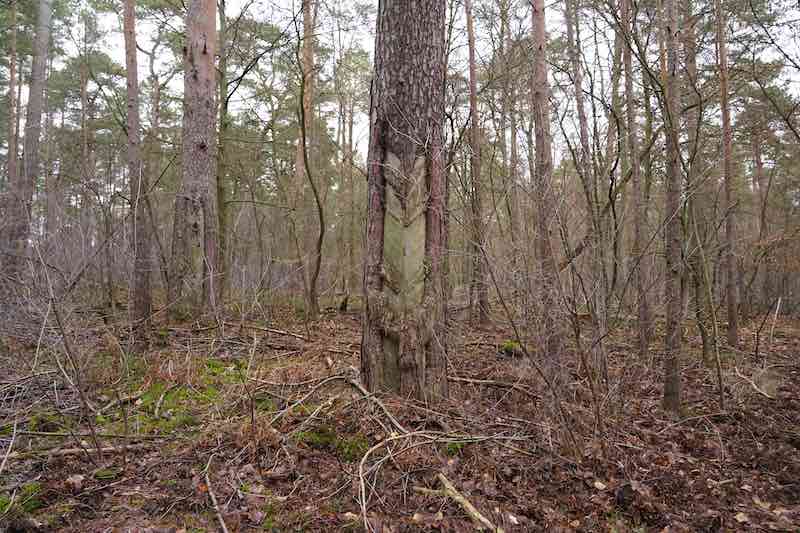
料理人としての経験を持つ岩間朝子は、食糧の生産、分配、消費、そこに生じる労働、資源の循環、社会的関係について、ワークショップやパフォーマンスなどを通じて人々と共に考える場を作ってきた。近年は協働作業を取り入れたオブ ジェや映像作品などの制作で、自然と人間の関係の技術的、生態学的、文化 的変化の歴史や、またそれに関わる社会構造について思索を広げている。
本展「もつれるものたち」に向けて制作されたインスタレーション《ピノッキオ》(2020年)もそのような実践である。第二次世界大戦末期、日本軍が松の根から航空燃料を生産しようと試みた史実を知った岩間は、木が養分を循環させ、傷を塞ぐための樹液を、人間が戦争のための動力エネルギーへと変換しようとした歴史的背景や開 発方法を調べた。また、岩間が居住しているドイツや、フランスでの松の利用に 関する歴史についても調べ、現存する松林を訪ね、そこで幹に残された採取の 傷痕を型取り、松脂を採取し、あるいは多くの資料から、樹液採取に勤しむ労働 者の身体、採取のための道具、蒸留装置などを写し取り、版画を制作した。本作では、そのような岩間の松との身体的な関わりや、資料調査の過程で生 まれたものたちがゆるやかな結びつきを成している。さまざまな状態の松脂や、蒸留システムを彷彿とさせるオブジェは、松という自然物に作用する人間の力と、人間の制御に拮抗する自然物そのものの力、またさらには松と人間の長く近しい関係から見えてくる人間社会のありようを遠望する。それは、タイトルとして引用されている、丸太が人間のこどもになる顛末を描いた「ピノッキオの冒険」(カルロ・コッローディ著 、1883 年 (Pino) = イタリア語で「松」) の物語にも接続されている。岩間はまた、道教に関する文献で目にした、仙人が松を食して不老不死となったという話から、松と人間のもうひとつの関わりを示唆するものとして、版画で小さな「松仙人」を描いた。インスタレーションが示唆する、人間と松の木の連関は、直線的な歴史や固定された意味を示すのではなく、観賞者それぞれが変容のミクロな視点と物語を見出す可能性を提示している。
解説:崔 敬華
With her professional experience as a chef and interest in the production, distribution, and consumption of food as well as labor, the circulation of resources, and the social relationships they create, Asako Iwama has organized various types of workshops and performances for collective discourse. Her recent work includes videos and objects of various media made in collaboration with others, reflecting systems of society by way of shifts in the technological, ecological, and cultural relationships between humans and natural materials.
The installation produced for this exhibition, Pinocchio (2020), is one such project. It began when the artist learned that the Japanese imperial army had attempted to develop alternative aviation fuel from pine roots toward the end of World War II. She investigated the historical background and chemical research to render pine tree sap the fluid for circulating nutrition and closing wounds into energy used for wars, as well as the use of pine in France and Germany, where the artist resides. She visited pine forests still remaining in Germany, making molds of the scars left on pine trunks and collecting resin from the trees. Through her archival research, she produced a series of prints from the traces of the bodies of workers who engage in the extraction of pine sap, including their extraction tools and distillation devices.
Pinocchio is an installation assembling pieces produced in this process of physical engagement and research. Different forms of resin and objects reminiscent of distillation point toward the contention with human forces that transforms this natural element, as well as this long, close relationship that reflects the condition of human society. The title of the piece, appropriated from Carlo Collodi’s The Adventures of Pinocchio, reflects the story of a pine trunk (pino = pine) becoming a human child.
As another figure in which human and pine meet, Iwama additionally created a small print with the image of the “pine hermit” from Taoism, said to eat pine needles in order to attain eternal life. The nexuses of pine trees and humans generate alterities without delineating linear histories or fixed meanings, offering the possibility for viewers to find their own micro-views and narratives.
Text by Che Kyongfa
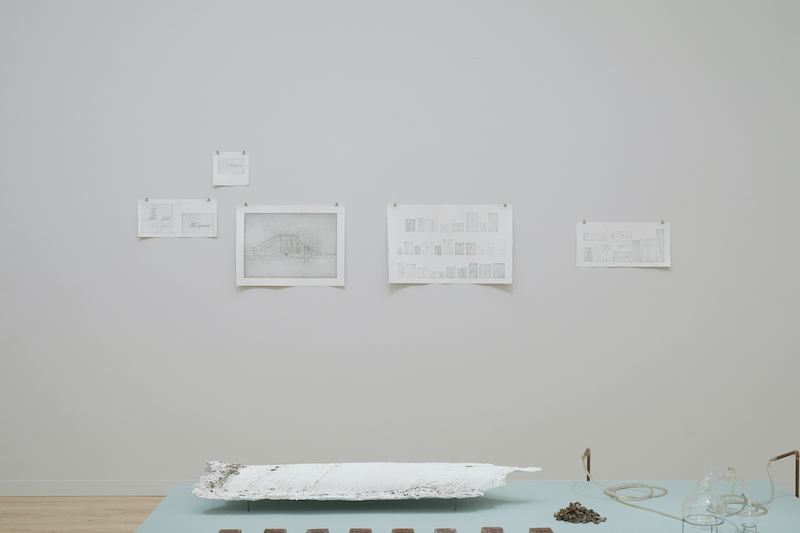
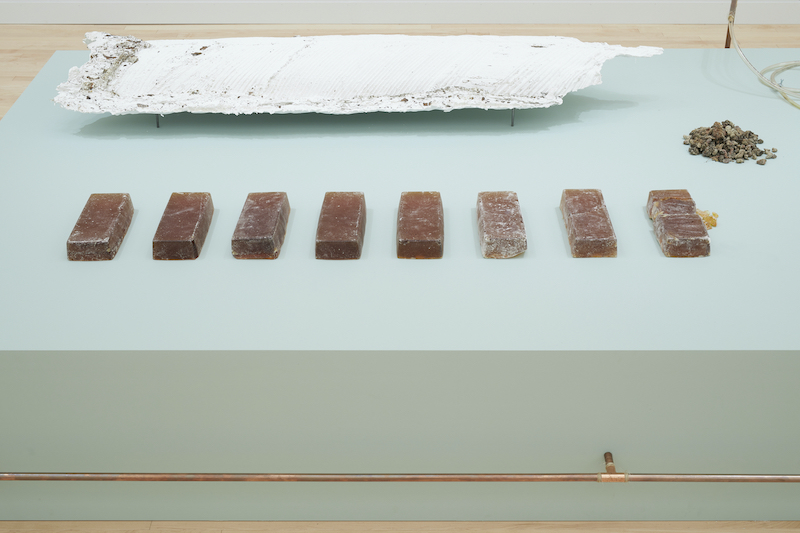
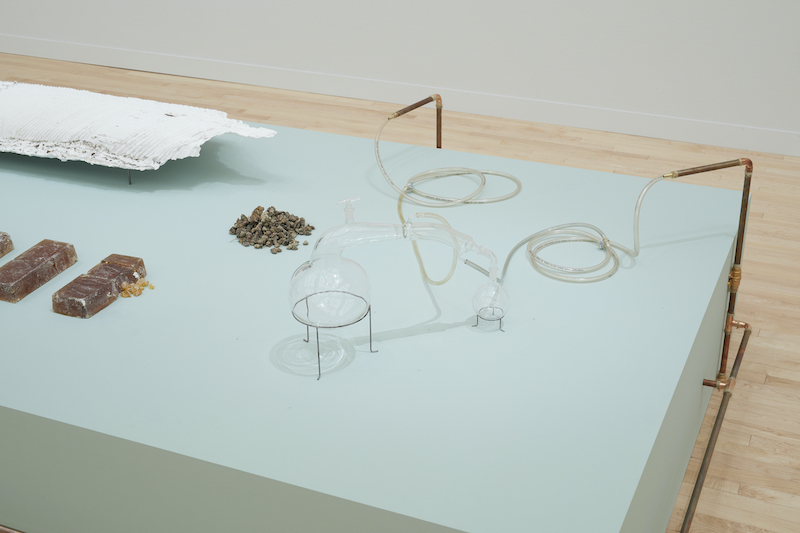
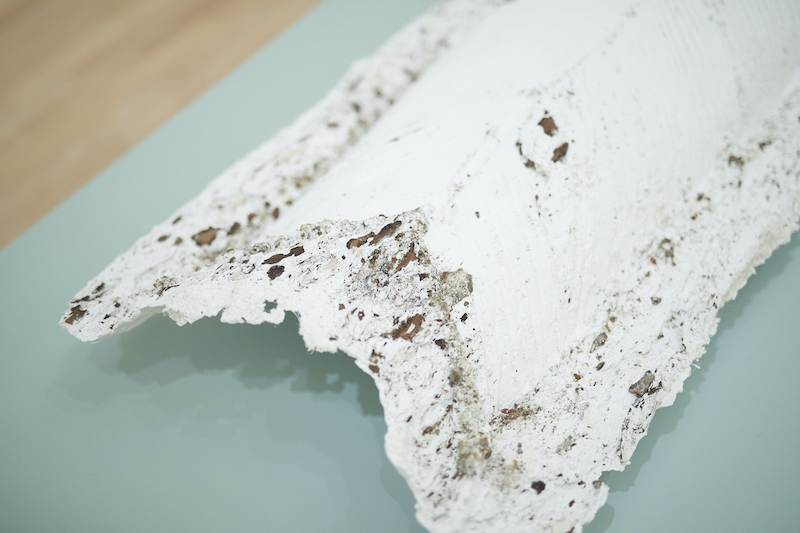
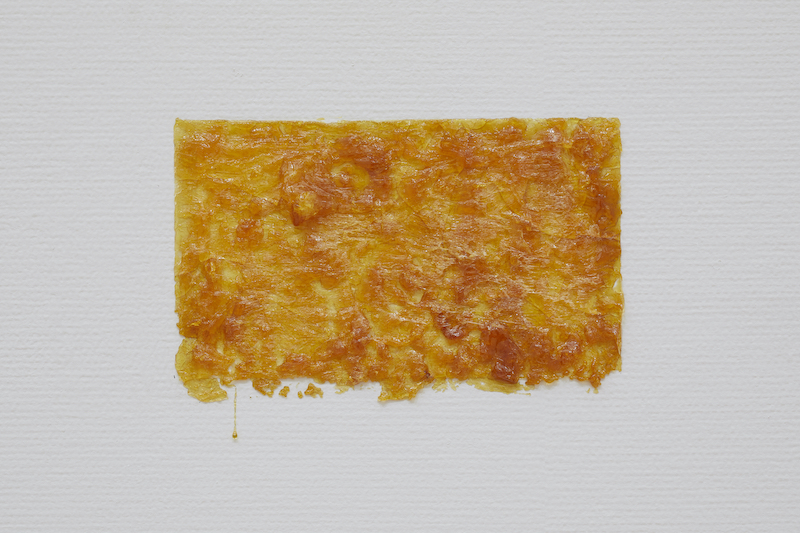

Installation views of “Things Entangling, a collaboration between MOT and KADIST”, 2020, Museum of Contemporary Art Tokyo, photo: Kenji Takahashi